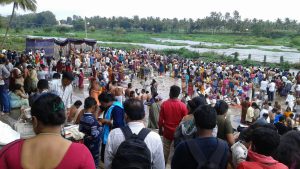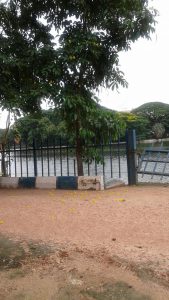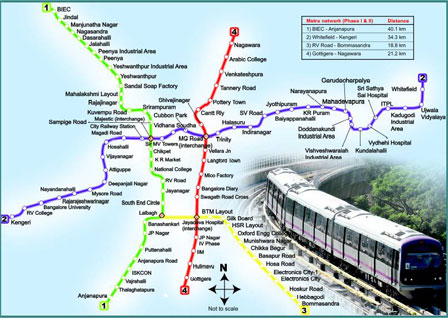Presentation at Citizens Agenda for Bengaluru and Citizens for Bengaluru — Citizens Centric Talk Series
Small Area Collaborative Planning for a Sustainable Bangalore
I came to Bangalore on this Fulbright-Nehru fellowship to reflect on a fundamental question applicable to any city–How do decisions get made in urban areas? So many people are involved in urban governance, as I’ve written about in this previous blog post.
While here in Bangalore, I used mostly qualitative methods (semi-structured interviews, archival research and participant observation) to learn about how actors in various domains of urban life work together to achieve a more sustainable city. As someone who has studied master planning processes around the world, I focused on the fact that Bangalore is going through a master planning process right now to see what direction the city is headed in for 2031. The following proposal attempts to weave together the great works that citizens in Bangalore are engaged in to ensure collective impact of their otherwise decentralized efforts.
Background
While the 74th amendment to the Indian constitution passed nearly a quarter of a century ago aimed to herald greater recognition and autonomy to the metropolitan regions of India, its implementation has been significantly hampered by the lack of political will to allow for the devolution of power on the one hand and due to the increasingly complex issues that impact urban areas on the other. In the State of Karnataka, the current status quo is further compounded by legal ambiguity between the intent of 74th amendment and a long-standing preceding State Town Planning Act act that established a metropolitan planning authority (Bangalore Development Authority–BDA) to prepare the Master Plan for Bangalore, the State’s largest metropolitan region. In his final book, Governance of Megacities, K.C. Sivaramakrishnan even argues for the abandonment of the main provision of the constitutional amendment which calls for the establishment of a Metropolitan Planning Committee (MPC) for every metro region.
In the face of this struggle to create organizational coherence at the metropolitan level, residents and civic organizations are becoming creative in large part due to their frustration with the opaque nature of governance. From public interest litigation (PIL) to large-scale citizen protests to small-scale demonstration projects, the horizontal network of civil society actors have produced meaningful outcomes towards local self-governance. The question is how can these efforts collectively lead to sustainable outcomes for Bangalore. As Judith Innes and David Booher write, there must be a value placed on “collaborative rationality” that comes from the interactions between multi-sector stakeholders — technocratic planning schemes within planning agencies, which tend to rely on ever-clarifying rules and regulations, are not the only form of “rational” decision-making and often do not address fundamentally complex urban problems.
This proposal aims to offer a pathway towards collaborative planning processes at the ward level with the ultimate goal that these processes can be brought to the metropolitan scale. The point is that, in the absence of clear metropolitan level direction, local areas within Bangalore are searching for ways that that their efforts will not only make a difference today, but have long lasting emergent changes into the future.
Overall Goal: Every BBMP ward (198) will have an inclusive, community-driven strategic plan to help prioritize use of Programme of Works (PoW) funds and other governmental and non-governmental resources by 2022. The topics included within ward level strategic plans should not be restricted to only issues that can been funded by particular sources of funds; instead, they should serve as a repository of resident concerns so that any resource that might address an identified topic might be accessed as the opportunity arises.
Problem Statement: As not all Bruhat Bengaluru Mahanagara Palike (BBMP) wards have legally functioning ward committees at this time, it is difficult for residents within a ward to collectively voice a vision for the future of their ward. One consistent source of funds to implement remedies to issues in wards is the PoW. Currently, the PoW in each ward is largely developed by the ward counselor and the BBMP ward Engineer. In an effort to influence which projects are entered into the Ward’s PoW, many contractors work with the ward counselor exclusively to ensure work that they can bid on is included in the annual list. Resident input into the use and prioritization of funds for most wards are limited if not totally excluded.
Solution: In an effort to empower residents in all wards and move the use of PoW funds from an opportunistic approach to a more strategic approach, all wards need resources to collaboratively develop a 3- to 5-year strategic vision which may include more than the kinds of projects funded through the PoW. The strategic vision for the ward represents the collective voice of the residents across all facets of urban life, some of which are the responsibility of the BBMP (roads, garbage, street lights) and some of which are the responsibility of the State of Karnataka (education, hospitals, housing).
Inclusivity and Collaborativeness: Within every ward exists a broad range of citizens, including marginalized communities based on caste and/or religion. Yet, all residents are co-existing without potentially having a basis for working together towards a common agenda. Where ward committees exist, they tend not to be representative of the population at large. More recent initiatives such as the October 2017 BedaBekuSanthe, Citizens for Bengaluru focused on a model of “co-ownership” of activities so that a broad range of organizations leveraged their audiences to voice what they want (Beku) or don’t want (Beda) for the city. The key to inclusiveness is not only that the voice of diverse constituencies are heard, but more importantly that their concerns are well documented and addressed as plans move forward.
Precedent: Some wards in the BBMP have already done this kind of strategic visioning which has positively influenced a longer term implementation strategy for a variety of different mobilizations of resources. Two relevant examples include:
- In this 2012 Best Practices guide by Civic, the ward vision and participatory budgeting in Ejipura with the assistance of the Janaagraha group helped create a 3 year plan for the ward for use in PoW funds. Janaagraha has since reinstate this kind of work in 2015 by facilitating MyCityMyBudget ward sabhas in areas with willing BBMP ward corporator and sufficient interest by the community. To date, 15 wards are being assisted by staff from Janaagraha to conduct meetings, prepare lists of priorities, track contracted works and engage with line agencies for specific issues. The lessons learned from this effort could be brought to other wards.
- Citizens for Sustainably CiFoS began working on mobility issues by developing a Comprehensive Transportation Plan for Wards 18 and 19. Funds were granted in 2015 through the Neighborhood Improvement Plan (NIP) challenge which was sponsored by United Technologies Corporation as part of their Corporate Social Responsibility funds. Since then , CiFoS has helped other communities establish “cycle days” and other projects that promote walkability and transit.
The ability to complete these projects as based on significant funding through private-sector foundation resources or the concerted voluntary expertise of existing residents. Channelling Corporate Social Responsibility (CSR) funds towards urban governance may require a review the approved categories of uses to ensure legal sufficiency; businesses may also need coalescing to be able to more clearly articulate the relationship between the quality of life for workers and continued economic development in Bangalore.
Sustained Effort: Collaborative planning processes, even in a relatively small area such as a ward, are very intensive and time-consuming. To engage residents in an inclusive manner requires the skills of strategic planners and dialogue facilitators who can help build consensus across diverse groups. Support and resources needed to actually achieve small area strategic plans is quite significant largely due to the time involved in outreach, communications, and mediation. However, two approaches could be developed to ensure adequate assistance is available to each of the wards. The first approach involves establishing a technical unit within the BBMP charged with the responsibility to assist all wards that have functioning ward committees in the development of a small area vision. The second involves the development of a cadre of pro-bono or low-cost volunteer planners, architects, mediators and facilitators who are given clear guidelines and protocols so that a decentralized planning processes follow agreed-upon standards for the strategic plans. Training and deploying such highly-skilled talent to the wards would require the coordinating capabilities of a non-profit organization such as Janaagraha.
To complete 198 ward-level plans will require a sustained effort that is not subject to political changes or election cycles. A body must steward the progress and completion over a clear target–for example 5 years (until 2022). Ideally, the BBMP would be the body to keep track of progress, but given the annual turnover of the Mayor of Bangalore, it may require stewardship by an outside entity such as the Namma Bengaluru Foundation or CIVIC.
Transparency and Learning: Although the outcome of collaborative planning process will be a written document, these should not be seen as static plans nor should they be difficult to access. Each of the completed ward-level plans can be placed online and accessible in one place, for example in the map of wards on MapUnity or by embedding an interactive web-based map on the BBMP website itself.
This kind of unifying display of plans made in an otherwise hyper-localized manner would allow people across wards, organizations involved in various topics and researchers across institutions to learn from each other to both identify unique issues facing different wards as well as find common allies to form coalitions on broader topics impacting the region.
Local Plans Towards Global Sustainable Development Goals: To ensure that that small area ward plans contribute to the the overall sustainable development of the City, key metrics can be disseminated to track of targets relevant for the UN’s Global SDGs. This particular goal address major urban issues of concern in all wards such as adequate housing, solid waste management, accessibility and mobility. Although not all indicators for Goal #11–Sustainable Cities–are available at the ward level, institutions in Bangalore such as the Indian Institute of Human Settlements (IIHS) and the Center for Science, Technology & Policy (CSTEP) are working towards calculating ongoing measures and engaging communities in achieving the global targets not only for Bangalore but for India as a nation.
Building Bangalore’s Urban Governance Network: The main tenet of this proposal is set a clear, attainable goal over the next 5 years by focusing on the development of ward-level visions or plans so that integrative work and an environment of learning can be created to address critical issues facing Bangalore.



